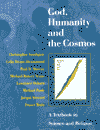Schrödinger’s Cat and the Meaning of Quantum TheoryOne of the basic problems of quantum theory is the relationship between measurement and reality. This is illustrated by the EPR Paradox. A good way to picture the problem is via a famous thought-experiment involving a hapless cat. The cat is in a box together with a canister of poisonous gas connected to a radioactive device. If an atom in the device decays, the canister is opened and the cat dies. Suppose that there is a 50-50 chance of this happening. Clearly when we open the box we will observe a cat that is either alive or dead. But is the cat alive or dead prior to the opening of the box? Quantum orthodoxy (Copenhagen interpretation)The dominant view in quantum mechanics is that quantum probabilities become determinate on measurement - that the wave function (see The Schrödinger Wave Equation) is collapsed by the intervention of classical measuring apparatus. This means that the cat is neither alive nor dead until the box is opened. The cat is in an indeterminate state. It merely has some specifiable probability of being alive, or, on the other hand, dead. This interpretation is usually allied with a tendency to extreme instrumentalism. On such a view the probabilities generated by the Schrödinger Wave Equation do not correspond to any physical reality. There simply is no reality to be described until an act of measurement collapses the wave function. Quantum mechanics is merely a useful calculating device for predicting the possible outcomes of such acts of measurement. In spite of its dominance in the textbooks, this interpretation is hardly satisfactory. To begin with, it may be regarded as proposing a dualism in physical reality: two worlds - an indeterminate quantum world and a determinate classical world. Then there is the problem of what constitutes classical measuring apparatus. At what level does the wave function actually collapse? The act of measurement that collapses the wave function cannot be limited to scientific instruments. After all, why should we assume that our scientific measurements are solely responsible for collapsing the wave function? This would give rise to a most peculiar world - one that was indeterminate until the evolution of hominids. Other interpretationsSome physicists, e.g. Wigner and Wheeler, have identified the classical measuring apparatus of the Copenhagen interpretation with consciousness. If so, they must be using a much broader definition of consciousness than is usual. What level of consciousness would be needed to make something determinate? Is the cat sufficiently conscious to determine the outcome of the experiment? Would earthworms do? What about viruses? The effect of pursuing this line of inquiry is to move towards a form of panpsychism - the doctrine that every part of the natural world no matter how humble is in some sense conscious! An alternative might be to ask does God collapse the wave function? (Click on this related topic to see the problems with this point of view.) Returning to the classical measuring apparatus, perhaps we should put the emphasis on ‘classical’ rather than ‘measuring’ - stressing not so much our intervention in the system as a transition from the world of the very small, in which quantum principles operate, to the everyday world of classical physics. This ‘neo-Copenhagen’ interpretation has the merit that it avoids the absurdities of the consciousness-based approaches. However, we are still faced with the difficulty of identifying an acceptable transition point. One suggestion is that we choose the level at which physical phenomena become so complex that they are irreversible. Two other interpretations are the hidden-variable theory of David Bohm and the many-worlds interpretation.
Email
link | Feedback | Contributed by: Dr.
Christopher Southgate |





